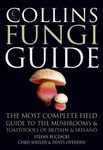![The Fusarium Laboratory Manual The Fusarium Laboratory Manual]()
Click to have a closer look
About this book
Contents
Customer reviews
Related titles
About this book
For the first time in nearly 20 years, a comprehensive collection of photographs and descriptions of the fungal genus Fusarium is available. This laboratory manual provides an overview of the biology of Fusarium and the techniques involved in the isolation and identification of individual species. It also represents the first time morphological and molecular approaches have been incorporated in a volume devoted to Fusarium identification. The authors include new species and the extensive use of genetic identification techniques.
Contents
I. Introduction
II. Techniques & Methods
A. Media
B. Techniques for recovering and sources of Fusarium
C. Techniques for culturing Fusarium
D. Vegetative compatibility groups
E. Fertility studies
F. Genetic/molecular analyses
G. Analysis of populations
III. Importance, Abundance & Distribution
A. Plant diseases caused by Fusarium
B. Biogeography
IV. Taxonomy & Identification of Fusarium
A. History of Fusarium taxonomy
B. Species concepts in Fusarium
C. Teleomorphs of Fusarium
D. Species descriptions - common, important, well-documented
E. Species descriptions - less common, important, well-documented
V. Appendices
A. VCG population analysis protocol (C. Campbell, M. Huss & J.F. Leslie)
B. List of secondary metabolites produced by Fusarium
C. Mycotoxicoses caused by Fusarium (W.F.O. Marasas)
D. Standard strain list
E. Locations of major Fusarium collections
Bibliography
Contents
Foreword Preface 1. Introduction Techniques and Methods 2. Media - Recipes and Preparation 2.1 Media for Growing and Identifying Fusarium 2.2 Supplementary Identification Media 2.3 Media for Isolating Fusarium 2.4 Media for the Preparation of Natural Inocula 2.5 Synthetic and Semi-synthetic Media 2.6 Media for Sexual Crosses 2.7 Sterilization of Media and Materials 3. Techniques for Recovering Fusarium 3.1 Collecting strategy(ies) 3.2 Isolation Techniques - Plants 3.3 Isolation Techniques - Soil 3.4 Isolation Techniques - Spore Trapping and Air Sampling 3.5 Seed Disinfestation 4. Techniques for Growing and Maintaining Fusarium 4.1 Vegetative Propagation 4.2 Preparing Cultures for Identification 4.3 Single Spore Subcultures 4.4 Mutagenesis 4.5 Culture Preservation 5. Vegetative Compatibility Groups (VCGs) 5.1 History of and Genetic Basis Underlying Vegetative Compatibility 5.2 Overall Strategy for Determining if Strains are Vegetatively Compatible 5.3 Recovering and Identifying nit Mutants 5.4 Typical Pairing Protocols 5.5 Common Trouble Spots - HSI, crn, and NitMs 5.6 Characterizing a Population with VCGs 6. Fertility Concepts 6.1 Heterothallic, Homothallic and Pseudohomothallic 6.2 Mating Type 6.3 Population Effects of Mating Type 6.4 Male, Female, and Hermaphrodite 6.5 Crossing Protocols 6.6 Developing Female-Fertile Tester Strains 6.7 Species Identification Through Sexual Crosses 7. Nucleic Acid Analyses 7.1 DNA Extraction and Purification 7.2 PCR - Mating-Type Alleles 7.3 Amplified Fragment Length Polymorphisms (AFLPs) 7.4 Sequence Analysis and Sequenced Loci 7.5 Genetic Maps Taxonomy and Identification of Fusarium 8. A Brief History of Fusarium Taxonomy 9. Species Concepts in Fusarium 9.1 Generic Problems in Speciation in Fusarium 9.2 Morphological Species Concepts 9.3 Biological Species Concepts 9.4 Phylogenetic Species Concepts 9.5 How Many Strains Make a Species? 9.6 Species Names 9.7 Subspecific Terminology 9.8 A Species Concept for Fusarium 10. Teleomorphs of Fusarium 10.1 Taxonomy of Teleomorphs 10.2 General Teleomorph Characters 10.3 Sexual Development and Differentiation 10.4 Spore Killer 10.5 Anamorph-Teleomorph Connections 11. Practical Approaches to Identification 11.1 Overall Identification Strategy 11.2 The Diseased Plant and Its Geographic Origin 11.3 Native and Agricultural Populations 11.4 Culture Preparation 11.5 The Essence of Morphological Identifications 11.6 Beyond Morphology - Sexual Cross Fertility 11.7 Beyond Morphology - Molecular Diagnostics 11.8 The Special Case of Fusarium oxysporum 11.9 Differences Between Temperate and Tropical Regions 11.10 Conclusions Species Descriptions 12. Morphological Characters 12.1 Macroconidia 12.2 Microconidia 12.3 Chlamydospores 12.4 Other Characters 12.5 Secondary Characters 13. Species Descriptions F. acuminatum F. acutatum F. andiyazi F. anthophilum F. armeniacum F. avenaceum F. aywerte F. babinda F. begoniae F. beomiforme F. brevicatenulatum F. bulbicola F. camptoceras F. chlamydosporum F. circinatum F. compactum F. concentricum F. crookwellense (F. cerealis) F. culmorum F. decemcellulare F. denticulatum F. dimerum F. dlamini F. equiseti F. foetens F. fujikuroi F. globosum F. graminearum F. guttiforme F. heterosporum F. hostae F. konzum F. lactis F. lateritium F. longipes F. mangiferae F. merismoides F. miscanthi F. musarum F. napiforme F. nelsonii F. nisikadoi F. nurragi F. nygamai F. oxysporum F. phyllophilum F. poae F. polyphialidicum F. proliferatum F. pseudoanthophilum F. pseudocircinatum F. pseudograminearum F. pseudonygamai F. ramigenum F. redolens F. sacchari F. sambucinum F. scirpi F. semitectum (F. incarnatum) F. solani F. sporotrichioides F. sterilihyphosum F. subglutinans F. succisae F. thapsinum F. torulosum F. tricinctum F. udum F. venenatum F. verticillioides References Index
Customer Reviews



































